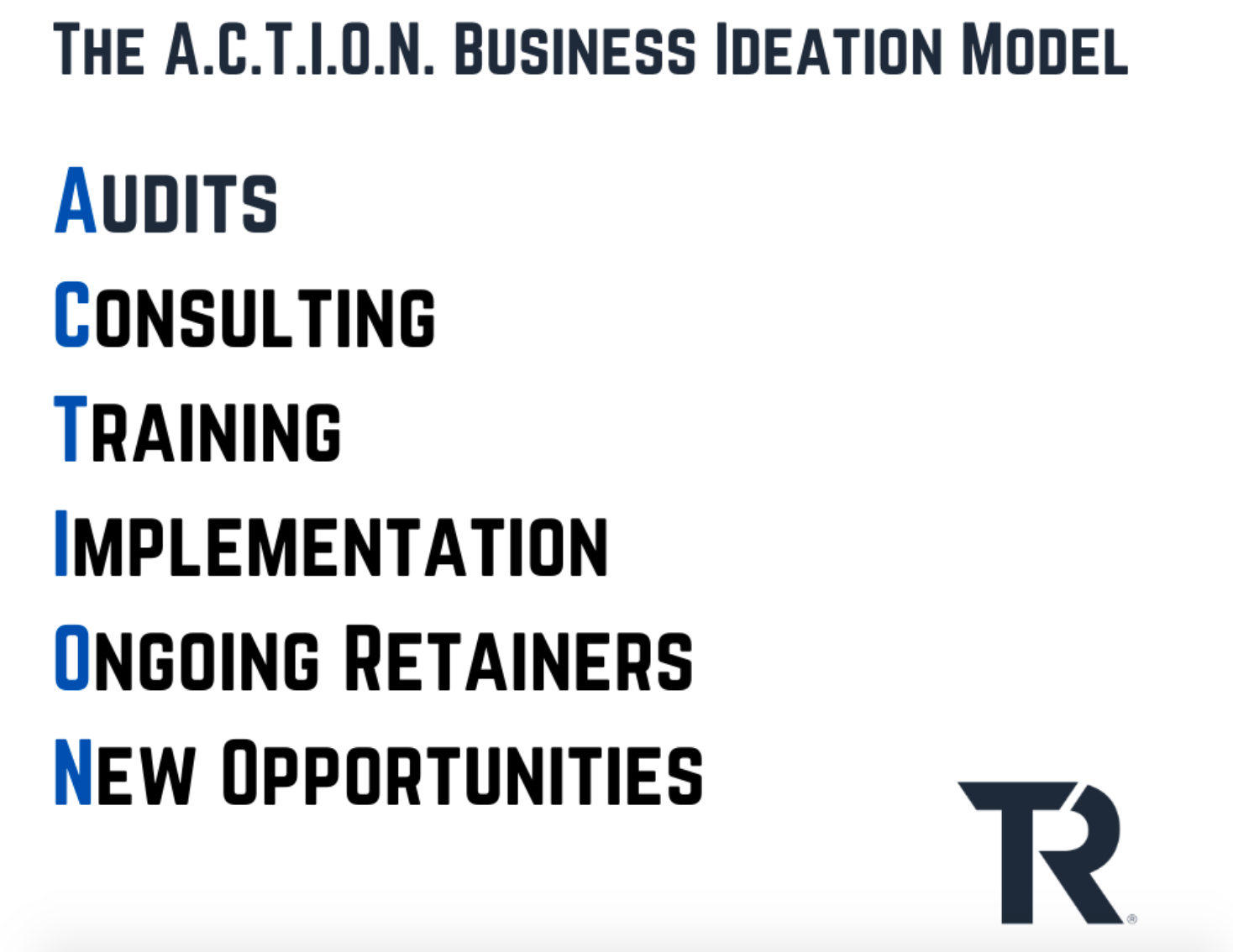Start your business with no upfront cost in as little as seven days.

There are three common reasons why people don’t start their own business.
Lack of cash.
Lack of clarity.
Lack of confidence.
I suppose another reason could be they just don’t feel like it. But if that’s not the issue, and you want to start a business, I’m going to quickly eliminate the other barriers to entry referenced. The best part? You can do so without learning any new skills or setting up a fancy website.
All you have to do is implement one or all parts of my A.C.T.I.O.N. business ideation model.

It’s a clear process for you to monetize your knowledge as an entrepreneur or side hustle. You’ll be surprised to learn how quickly you can start a business based on the experience you already have or can develop in a short period of time.
This article should take you about seven minutes to read and you can be ready to start generating revenue in as little as one week.
Take a self-inventory
The first step is to do a self-inventory of all the jobs you’ve had in your career. This includes paid roles as well as volunteer opportunities. You may find it helpful to review your resume or LinkedIn profile.
Then, write down all the tasks you’ve performed during those roles and assign them to various zones of competence.
- Zone of Incompetence: You don’t do these tasks well.
- Zone of Competence: You can do these tasks but may not enjoy them and other people are better at them.
- Zone of Excellence: You are very good at these tasks and they bring you success. But, you might be getting bored with them.
- Zone of Genius: You absolutely love doing these tasks and you’re phenomenal at them.
Next, take a look at the tasks in your zones of excellence and genius and decide which you’d like to offer as a professional service provider.
It’s ok to offer more than one service, but they should be complementary since you’ll be providing both services to the same audience. For example, lead generation and email marketing would go well together. Email marketing and dishwashing wouldn’t.
From here you’ll need to determine which audience you want to offer these services to. If possible, I suggest focusing on an industry you’re already familiar with. This will help you rely on your past experience and eliminate impostor syndrome.
Now, put it all together:
I offer (the services you decided on) to (the audience you’ve chosen)
For example “I offer email marketing and lead generation services to startups”
There you go — you’ve already outlined your initial service offer and audience. You’re now ready to determine which part(s) of the A.C.T.I.O.N. model you’d like to leverage and launch your business.
Audits
Tax audits can be scary, but business audits can reveal valuable areas of opportunity and optimization. Offering audits (based on the tasks you previously identified from your zone of genius or excellence) is the most hands-off way to generate revenue since you’re not responsible for any of the associated next steps.
Even if you’ve never written down the process for making sure the tasks you’ve selected are completed in an efficient manner, chances are you already have one in mind. For example, and email marketing expert would know effective lead generation involves providing value in exchange for your audience’s email address and an eye catching title is needed to capture their attention.
Your audit will cover all the associated best practices and identify areas of improvement.
Action item:
Document the step-by-step process a company or individual must follow in order to efficiently perform the tasks outlined in your service offering.
Consulting
Consultants are often seen as the go-to professionals for any business needing help. They provide expert opinions, analyses, and recommendations to organizations or individuals based on their own expertise.
Sticking with the same example – an email marketing pro – this expert can consult companies on how to create an effective email marketing strategy that aligns with their overall business goals. It’s important to offer more bespoke input and provide industry-specific examples of success, but you can follow the same process outlined in your audit for developing a winning campaign plan.
Action item:
Determine how you’ll provide consulting services including how you’ll communicate (email, phone, in-person) and how often.
Training
Although they may sound similar, there is a vast difference between training and consulting. Consulting deals with helping companies develop strategies, whereas training focuses more on helping people develop the skills needed to implement these strategies.
In this example, the email marketing expert could teach a company’s staff different techniques of writing emails. Keep in mind, that this could be done through a series of team workshops or one-on-one training.
Action item:
Document the step by process associated with completing the tasks you’re training people on. To save time, consider creating video tutorials using tools such as Loom.
Implementation
Based on what you’ve learned during the previously mentioned services you may conclude a company doesn’t have the right tools, team or resources to reach their business goals.
Fortunately, you can be of great value by helping with the implementation and integration of these missing pieces. This can include anything from hiring new employees to finding the right vendors and partners.
Action item:
Make a list of tools and resources companies or individuals can use to achieve their desired outcome as it relates to your service offering. If possible, form an affiliate relationship with these third parties so you can generate additional revenue by suggesting them.
Ongoing Retainers
With an ongoing retainer you provide advice and services based on your area of expertise. You don’t necessarily have pre-determined deliverables but it’s important to be responsive and available when your client reaches out to you.
Going back to our example of an email marketing expert, this could involve quickly reviewing an outgoing email or helping a writer who can’t quite figure out an email subject line.
Action item:
Document examples of specific questions and activities you can help with on an ongoing basis. This should include daily and long-term tasks.
New Opportunities
By design, this is the most flexible part of the model. What you come up with is all based on the organization, their goals and creative ways you can help them reach their desired outcome.
You’ll often leverage this approach after you’ve worked with a company in some capacity. The reason being that you’ve already developed a trusting relationship and have a clear understanding of their operations.
Examples could include hosting a podcast on their behalf, creating educational content for their audience or even speaking at events as a company representative.
Action item:
Think of something new!
Your turn
You now have a clear plan to take A.C.T.I.O.N. and monetize your knowledge.
With no startup costs and the ability to leverage your existing skills, this model democratizes access to entrepreneurship by removing previous barriers to entry. And as a heads up, you can start or stop anywhere in the process — just get started!
whenever you’re ready, there are three ways I can help you
1. Build your online business in just 30 days (Join the presale now)
2. Get quick answers to your most pressing questions (Booked out 2 weeks)
3. Work 1:1 with me to build your revenue and personal brand (Booked out 4 weeks)
This article was written by Terry Rice, and originally appeared on Entrepreneur.com.




